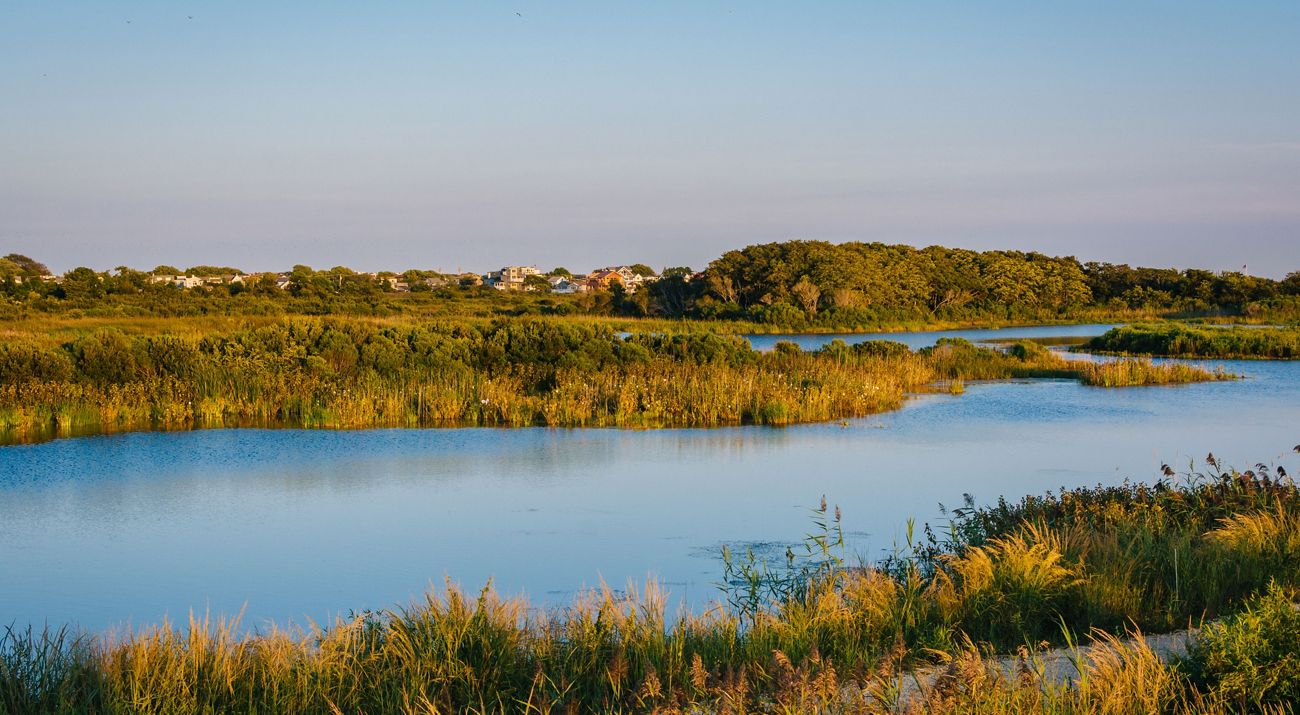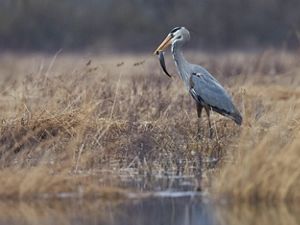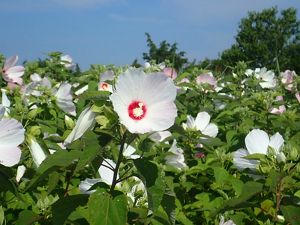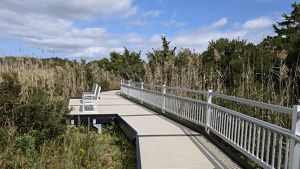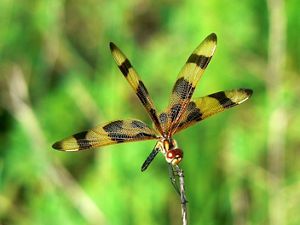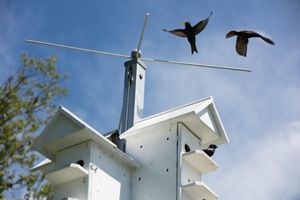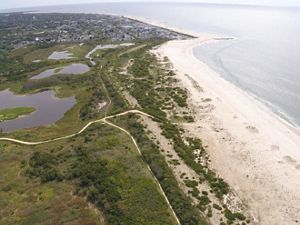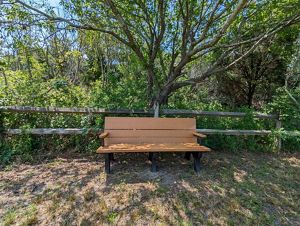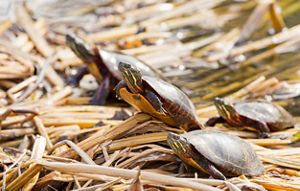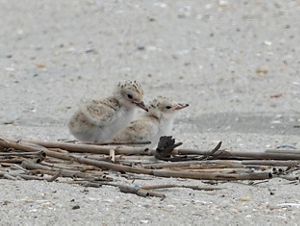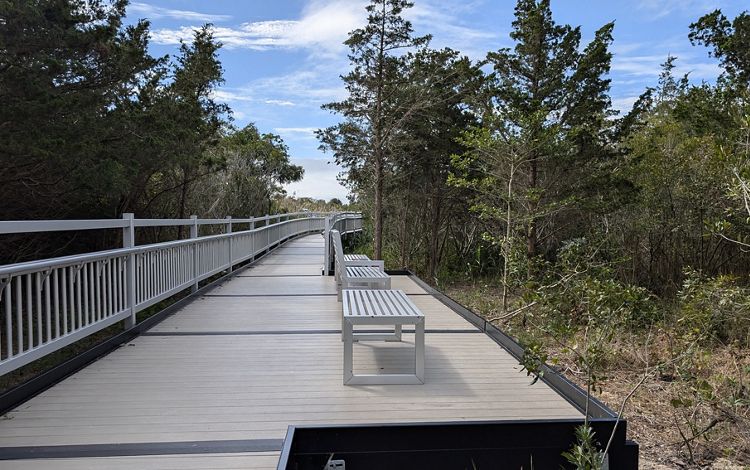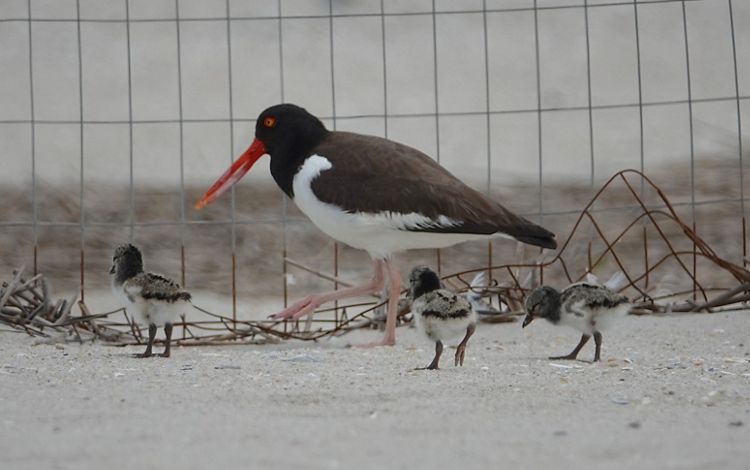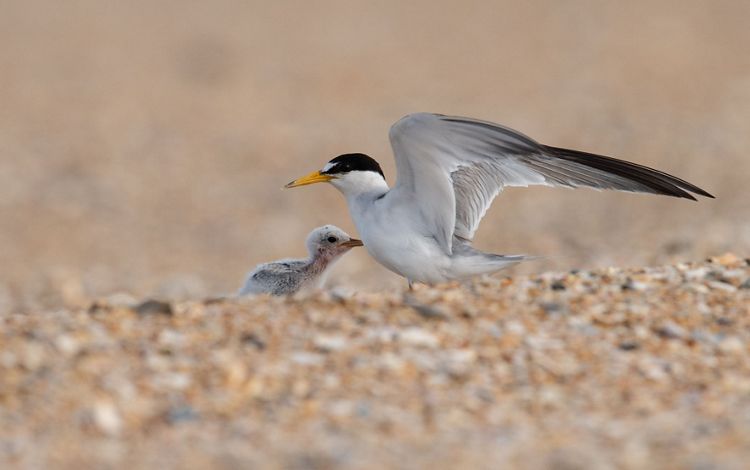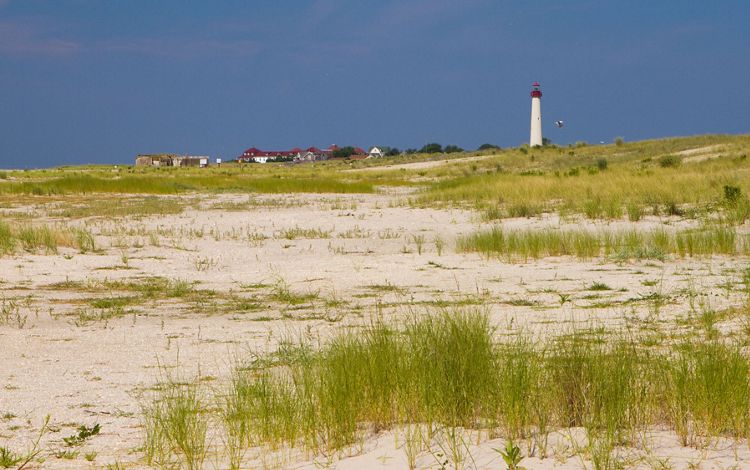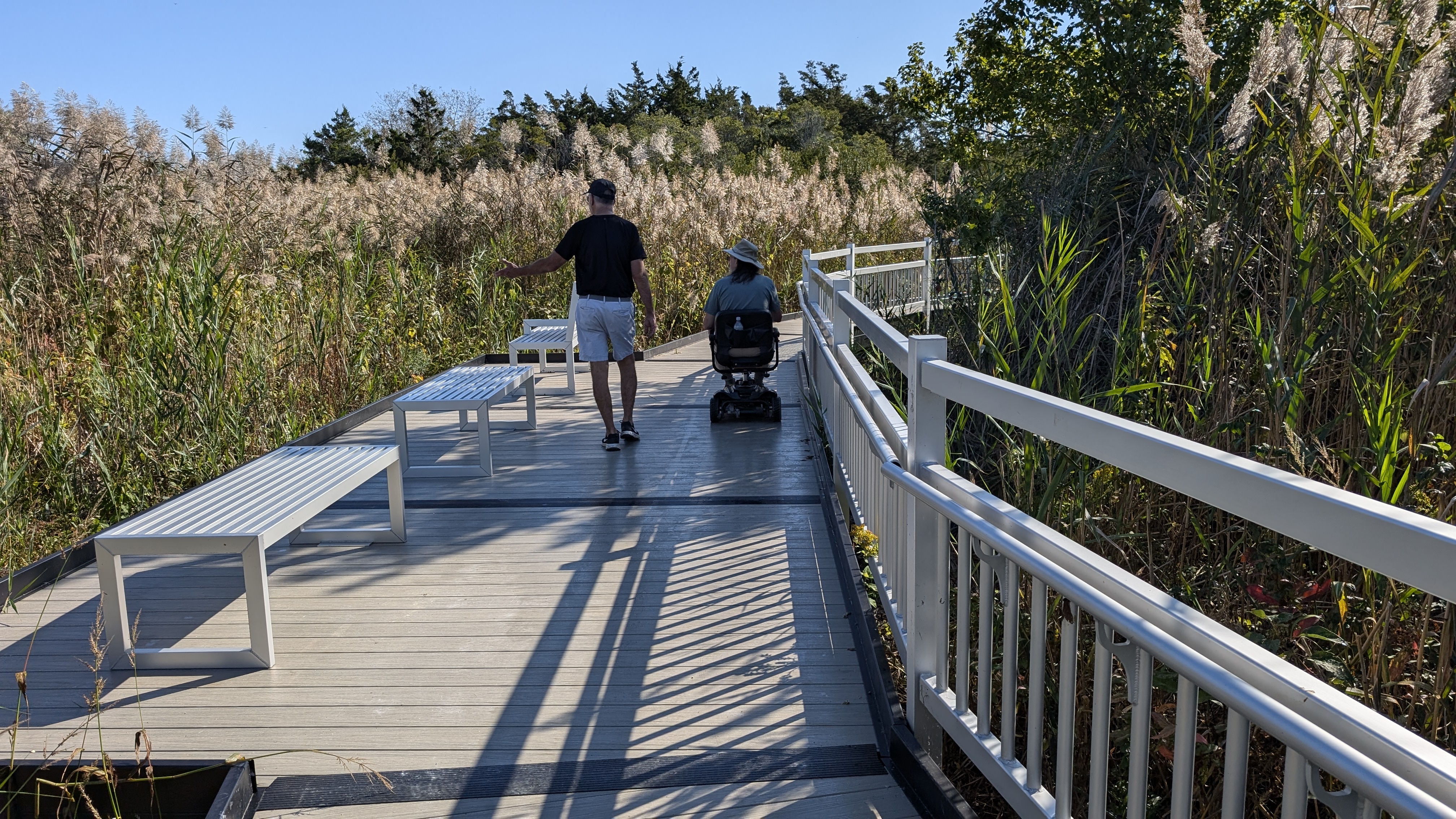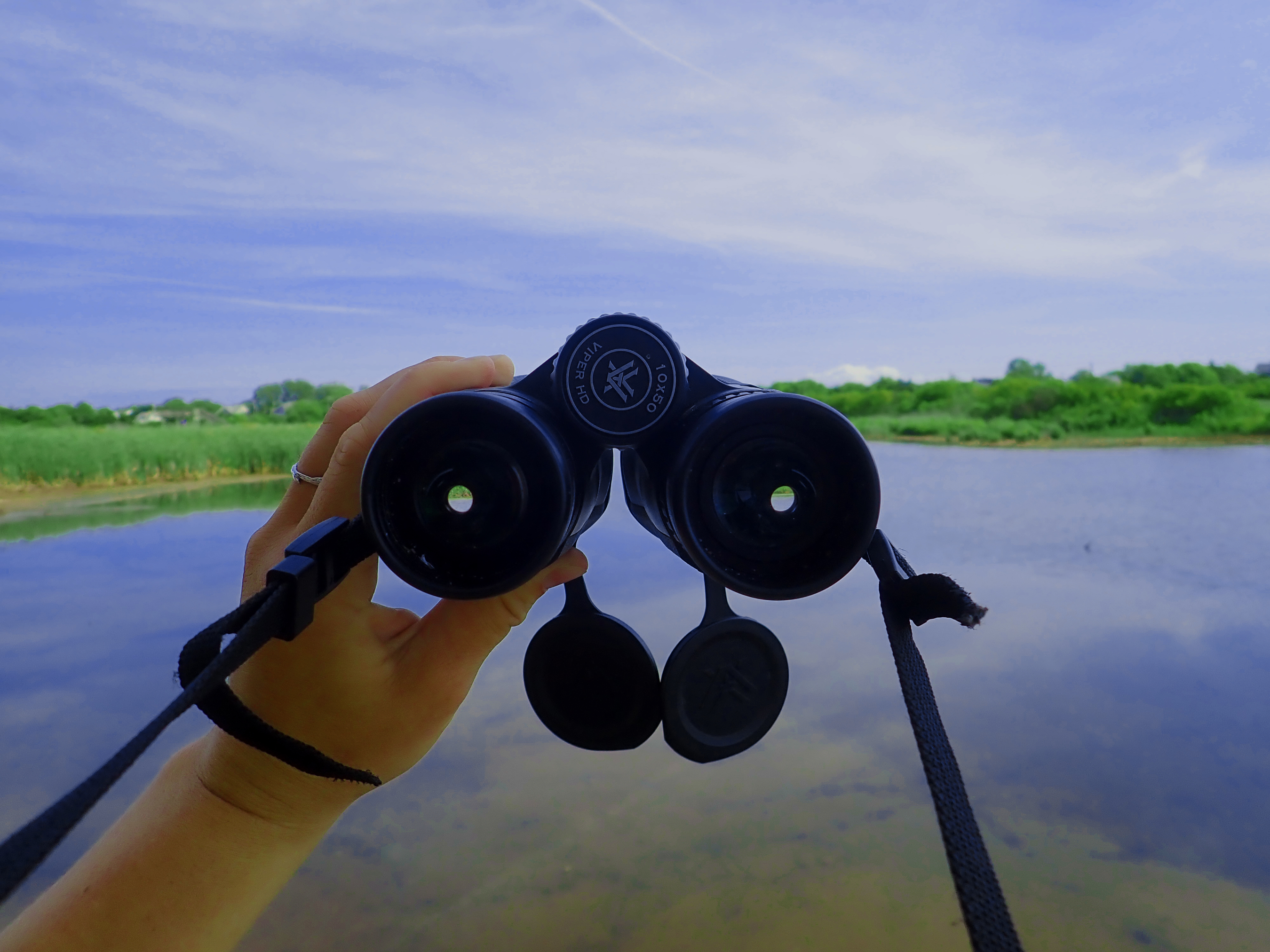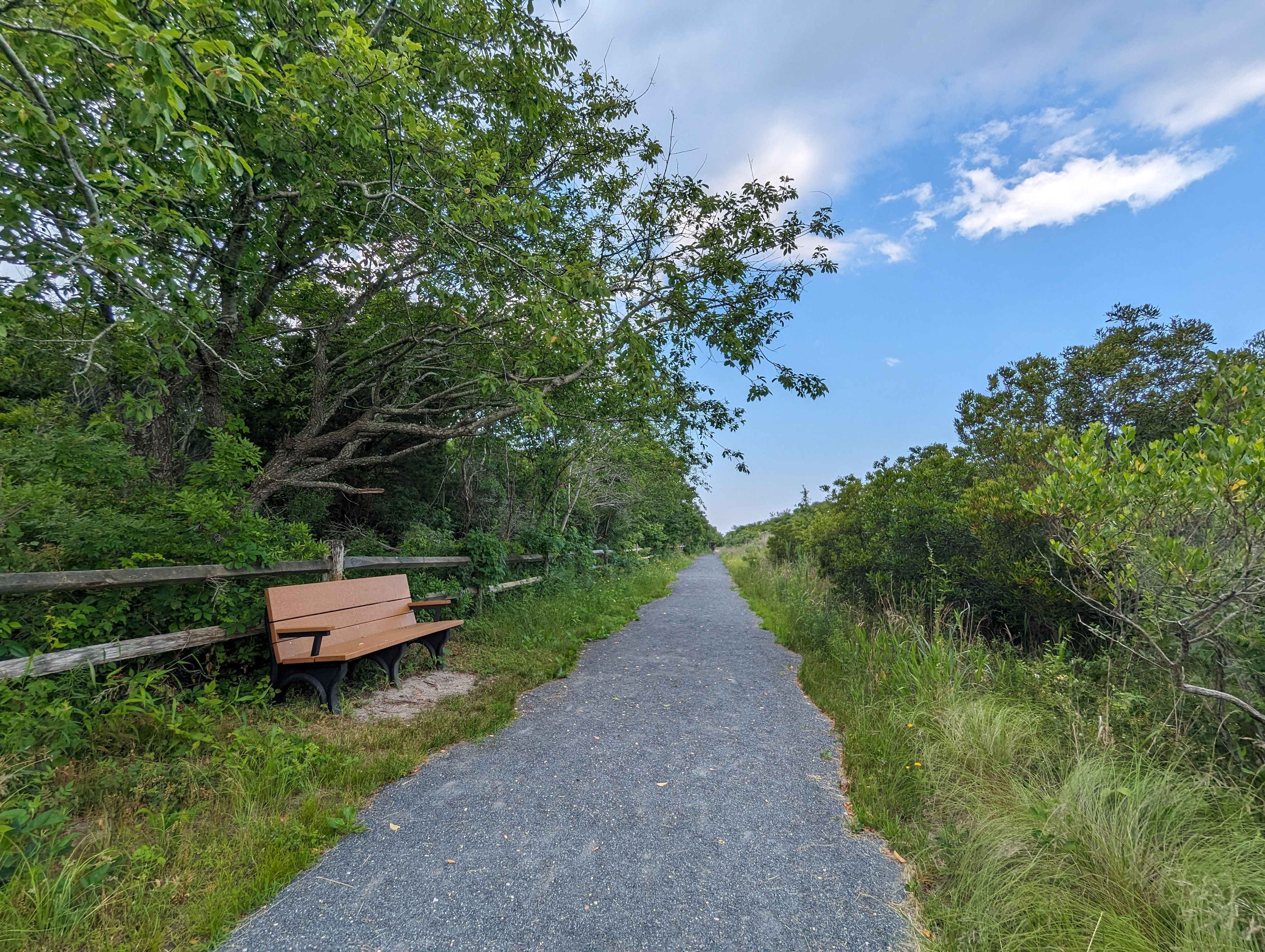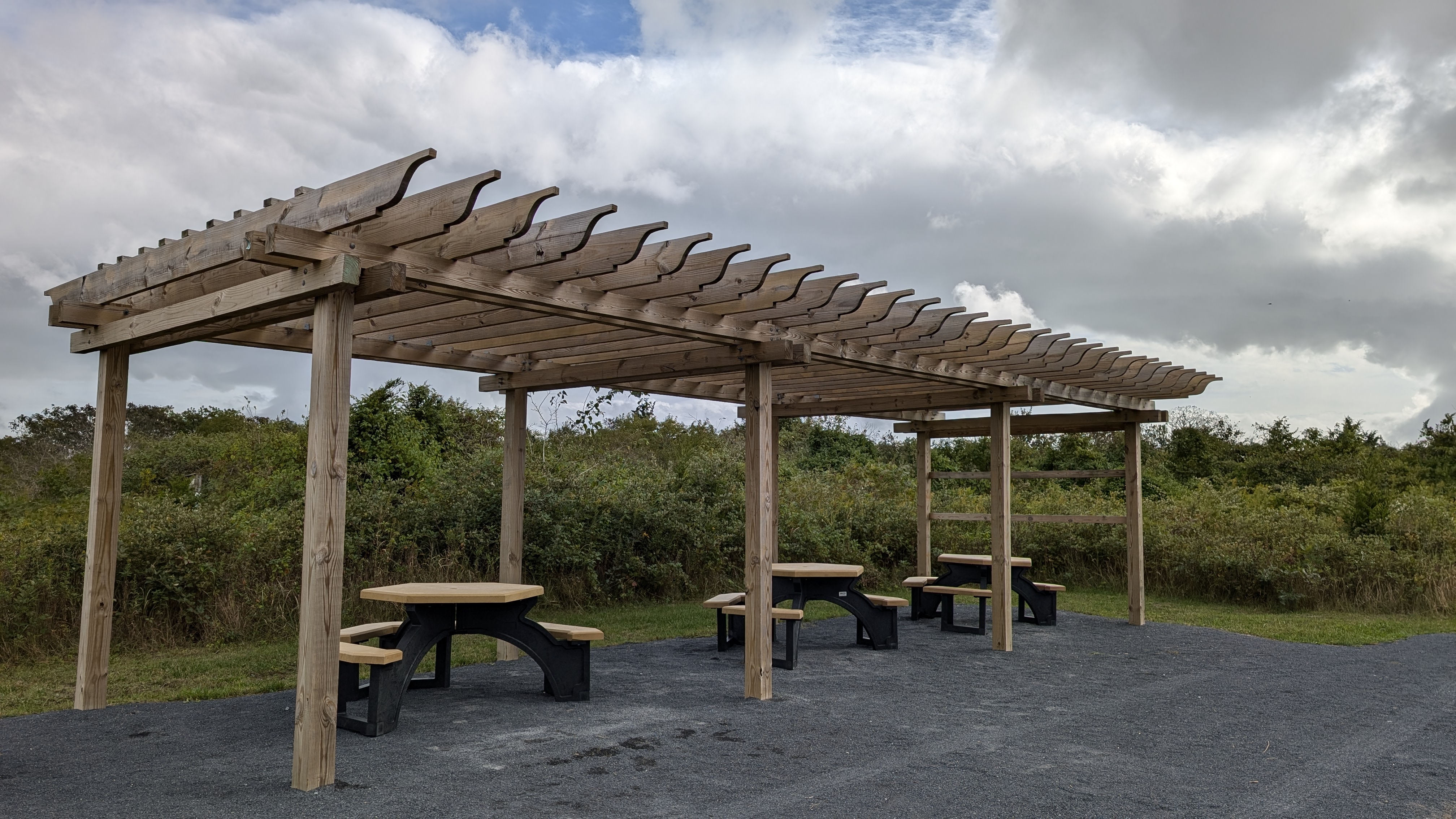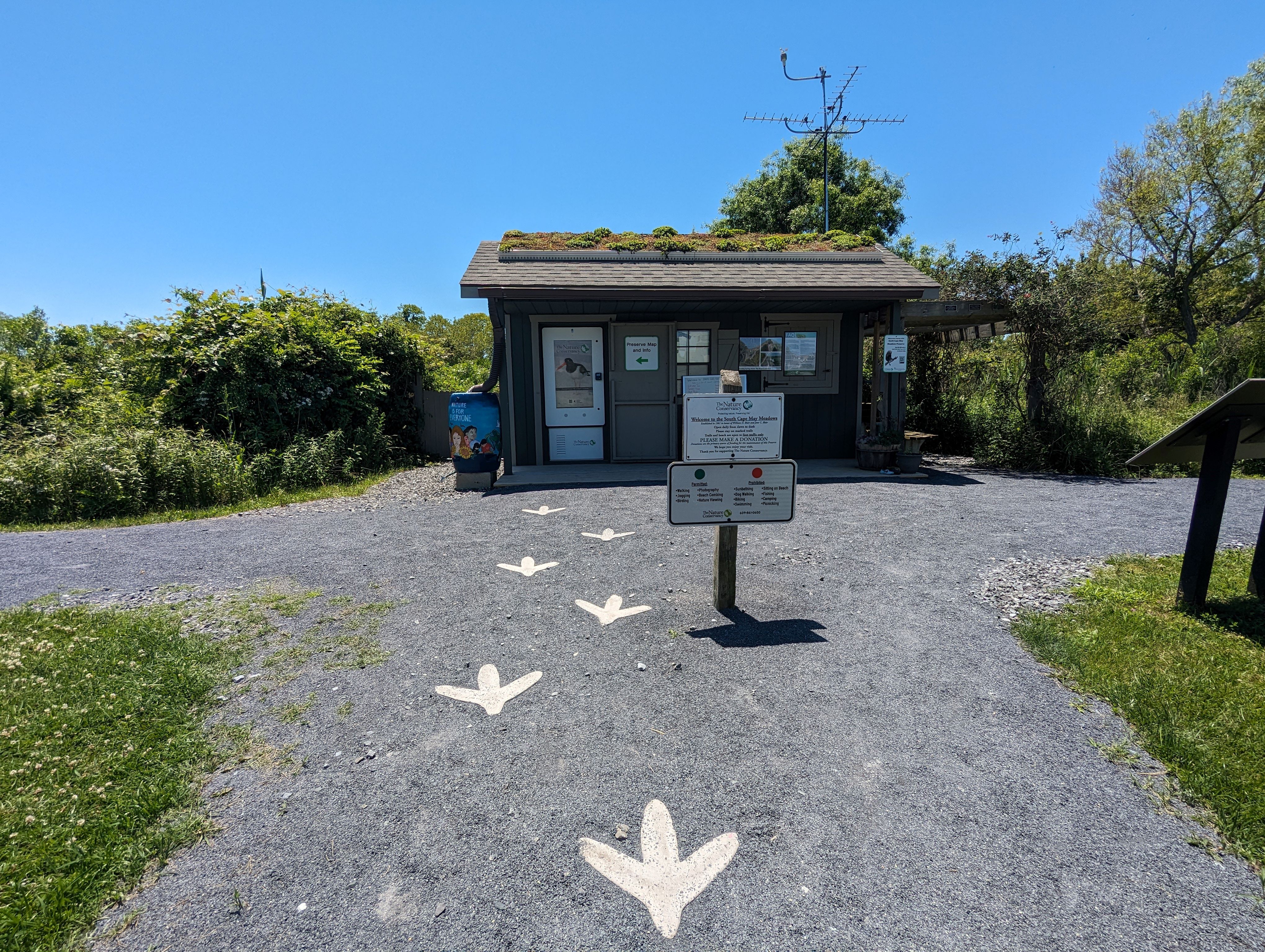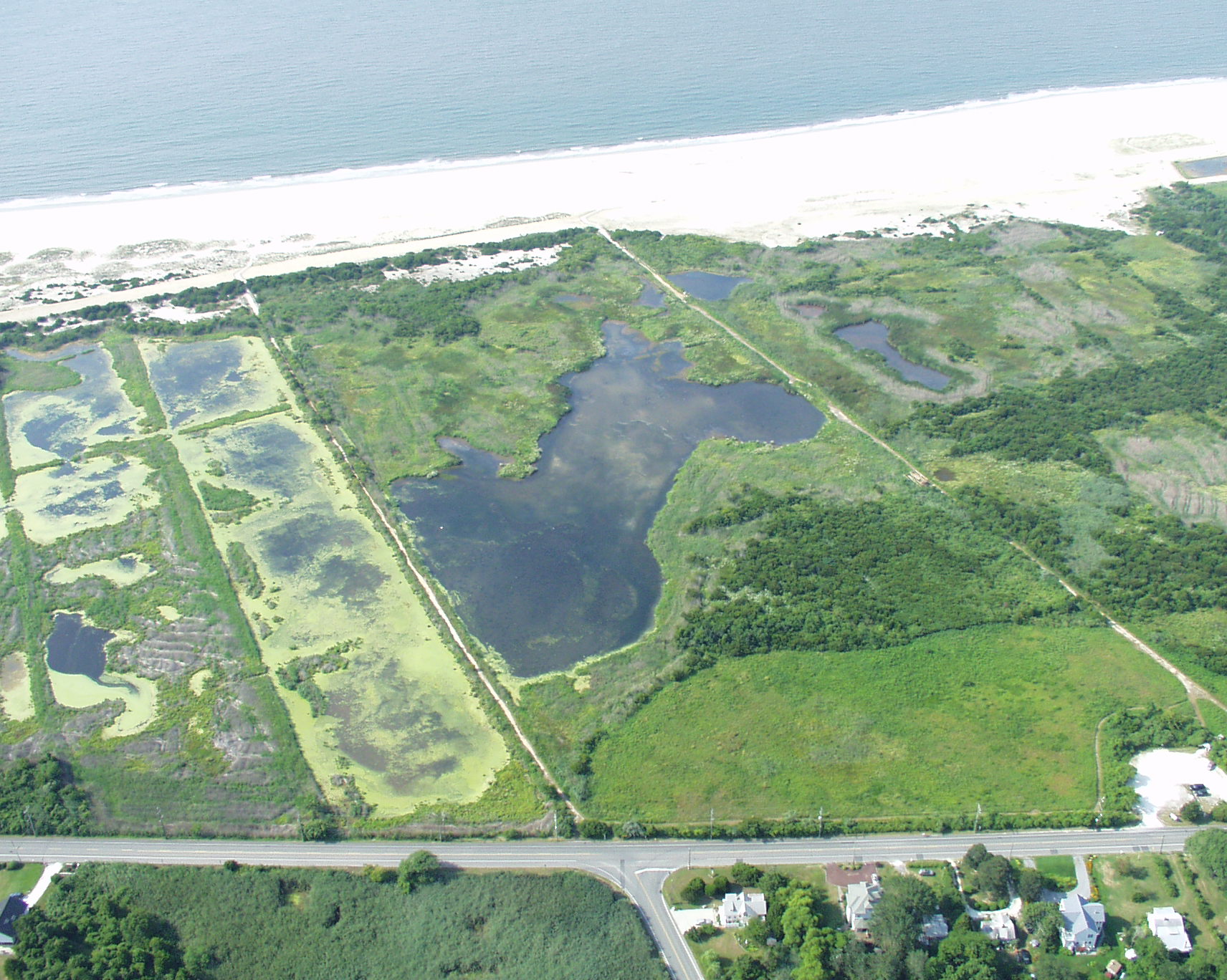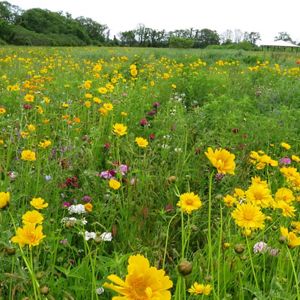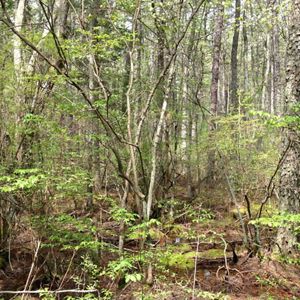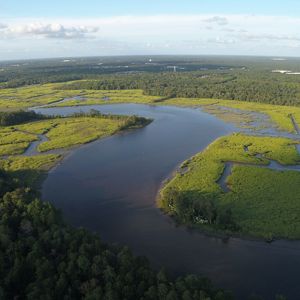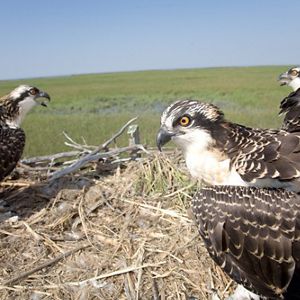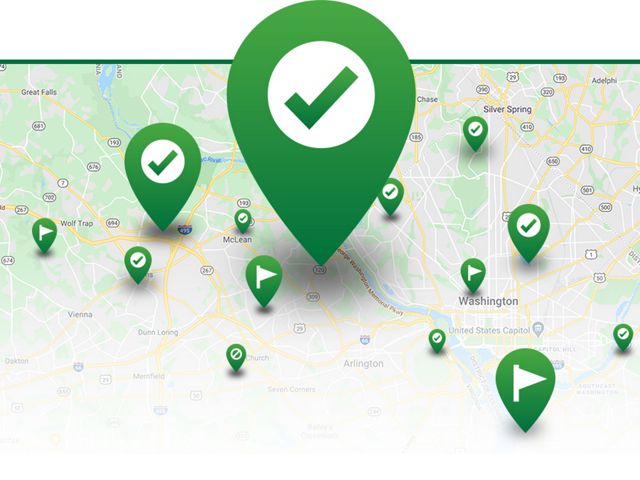Description
Located at a critical point on the Atlantic Flyway, the 200-acre South Cape May Meadows preserve is a haven for native and migratory birds, and a globally renowned paradise for birders. The site's protected habitat provides foraging and resting habitat for birds traversing the Delaware Bay and also supports a wide variety of avian and terrestrial species year-round.
Flat, walkable trails more than two miles long cut through lush meadows that put on a spectacular flora-and-fauna show in every season, with the charming Cape May lighthouse as a backdrop. An ADA-compliant boardwalk complete with handrails, benches and braille signage offers beautiful views and enhanced birding opportunities for a wider audience. The varied landscape boasts dunes, fields, freshwater wetlands and a full mile of undeveloped, protected beach.
The welcome center has an interactive kiosk that visitors can use during their time at the preserve. The kiosk features the preserve's ecology and history, the calls of local birds, an interactive preserve map and much more. The trail system provides visitors with wildlife viewing opportunities through the preserve’s many habitats including the undeveloped protected beach, a rarity on the heavily developed Jersey shoreline. For detailed information about preserve amenities and trail conditions, read the Visitors Guide.
